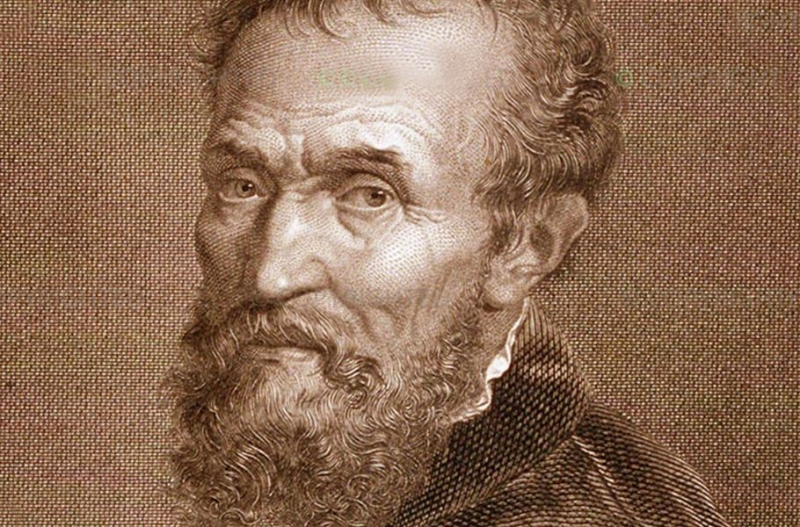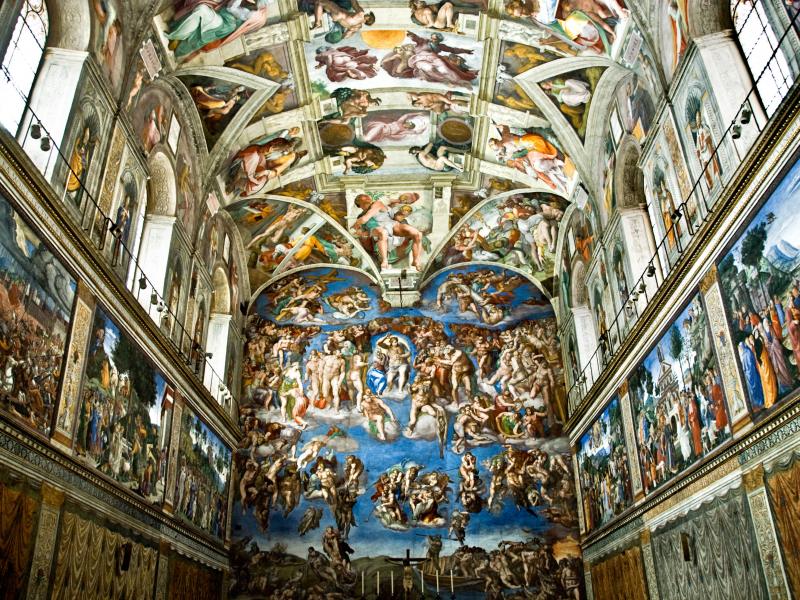Michelangelo
Michelangelo was another iconic "Renaissance man" who was excellent in both painting and sculpture. Michelangelo, like his contemporaries Leonardo da Vinci, proved to be a master of several artistic trades, with his paintings standing out as his most renowned works. He went on to create two of the most stunning frescoes in Western art history in the Vatican's Sistine Chapel, which can still be viewed today. His ceiling works influenced many Baroque ceiling painters for years due to their detail.
Born Michelangelo Buonarotti, he was known as a prodigy in the fields of art, building, and sculpture. He tried numerous art mediums, but painting and sculpture remained constant throughout his career. The majority of his works concentrated on humans and religion, as evidenced by his frescoes in the Sistine Chapel and several commissioned sculptures. Despite his youth, Michelangelo established himself as a prominent artist after completing David (1501 - 1504).
Known as one of art history's true "characters," Michelangelo went on to become one of the Renaissance's greatest artists despite his anger, volatility, and stubbornness.
Despite his reputation, Michelangelo was able to produce monumental sculptures and paintings that are still revered and worshipped today. Michelangelo's early training in sculpture, as well as the study of cadavers, helped him to become an expert at depicting anatomy, giving his artworks an unequaled level of realism. Furthermore, Michelangelo's talent in carving a full sculpture from a single block of marble has yet to be matched in art history, as he was thought to be able to convey real-life from stone.
While he was a part of the rebirth of old Greek and Roman art, Michelangelo's contributions went beyond mere imitation of classical art. His works were mixed with such intensity and emotional realism that they sparked quite a deal of criticism, as works of that intensity had not previously been seen.
Michelangelo's remarkable masterpieces continue to inspire admiration, astonishment, and awe among art enthusiasts today.
As an artist, he was considered nothing short of divine, and he is widely recognized as the greatest sculptor of all time. His Renaissance achievements shone a brilliant light on Western art and architecture that endured long after his death. While many attempted to mimic his approach, it became simply impossible to create artworks in his style.
Lifespan: 1475 – 1564
Nationality: Italian
Art Movements: High Renaissance
Most Famous Artworks
- Pietà (1498 – 1499)
- David (1501 – 1504)
- Sistine Chapel ceiling (1508 – 1512)












